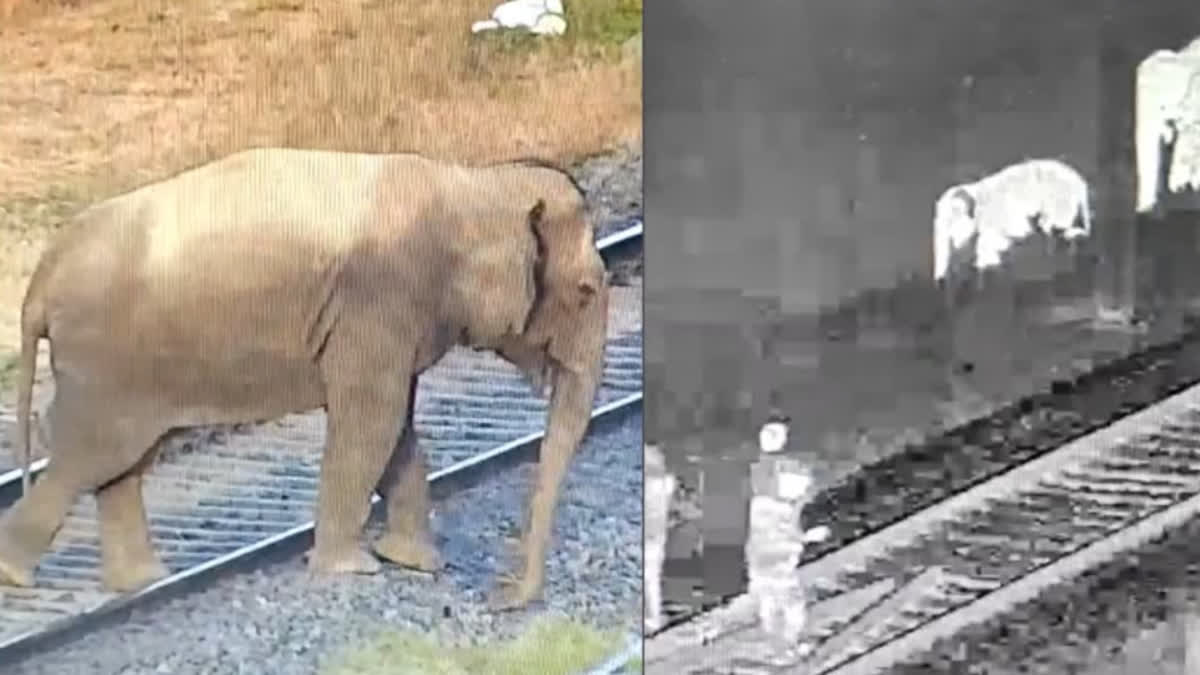Coimbatore (Tamil Nadu): It’s a dark November 20th evening in the heart of the Madukkarai forest, and we stood close to the railway tracks which have been the reason of many elephant deaths. But not anymore. Here a battle is being waged to save the gentle giants from meeting a tragic end under the wheels of a speeding train and AI cameras play a big role. Installed to track elephants and alert officials on real-time basis, the technology may not sound as interesting but in reality and for first timers, it is awe-inspiring and heartening too.
This 2.5-kilometer stretch of railway line through the Madukkarai forest is infamous. Over the last two decades, 35 elephants have died here in train collisions. Today, Tamil Nadu is the first state in India to install AI cameras to reduce these deaths. Since the project began in October 2023, officials claim over a thousand elephants have been saved.
As we arrive at the control room near the forest department check post for a reality check, we realize it is the seat of all action. A loud ring here, an alarm there, blinking red and green lights on one side while on the other, guards on duty in all readiness. They monitor giant screens that show live feeds from AI cameras. Ajith, a young operator and a first-generation graduate from a tribal community, explains how it all works.
“These cameras rotate 360 degrees and detect animals near the tracks,” he says, his hands steady on the joystick. “If an elephant is spotted, we alert the forest guards and train drivers immediately.”
While Ajith is proud of the technology, he admits the work is exhausting. “I’m an engineering graduate, but this job gives me satisfaction because elephants are part of our lives. Protecting them feels personal,” he says, his voice tinged with pride and fatigue.
Suddenly, the alarm goes off. “There’s a one-horned elephant near the Chinnampathi railway gate,” Ajith announces, and the room springs into action.
We accompany forest officials to the railway gate where the elephant was spotted. The journey is treacherous—darkness surrounds us, and the ranger warns me to keep an eye out for snakes and scorpions.
Standing on the tracks, memories of a tragic night in 2021 flood back—three elephants crushed under a speeding train. It’s a stark reminder of what’s at stake.
As we approach the elephant, forest guards, led by ranger Satheesh Varma, shine flashlights and raise their voices to drive it away. The elephant retreats into the bushes but lingers just 50 meters away.
Satheesh says there are a lot of challenges. “During the rainy season, chasing elephants becomes even more difficult. Last week, a large elephant charged at us while we were trying to guide its herd away.”
Amid the challenges, the AI cameras serve as boon. They save time, reduce risks for forest guards, and provide precise data. Since their installation, no elephant deaths have been reported on this stretch. But as I dig deeper, it becomes clear that the cameras are only a part of the solution.
“Elephants don’t follow schedules,” Satheesh says. “They wander at odd hours, and it’s impossible to predict their movements all the time. Without constant human vigilance, the technology would fail.”
However, the Kerala section of the same railway line continues to report elephant fatalities, which raises the question: Is this project scalable, or is it merely a localized fix?
The AI cameras are also saving other animals. Satheesh recounts a recent incident where four leopards, including a rare black leopard, were spotted on the tracks. “We managed to guide them back into the forest before a train arrived,” he says, his face lighting up with pride.
But these victories come with a heavy workload. Guards often work late into the night, facing not only elephants but also dangerous terrain and unpredictable wildlife.
The forester also feels it is high time the wildlife corridors, reduced train speeds, and better forest management got more importance without which AI system cannot handle the gargantuan work.
As we leave Madukkarai, we are struck by the dedication of the forest department staff. Their work is grueling, and the AI cameras are a helpful tool, but not a magic wand. This reality check is, while Tamil Nadu’s AI initiative is a step forward, the fight to protect elephants is far from over.
Read More



